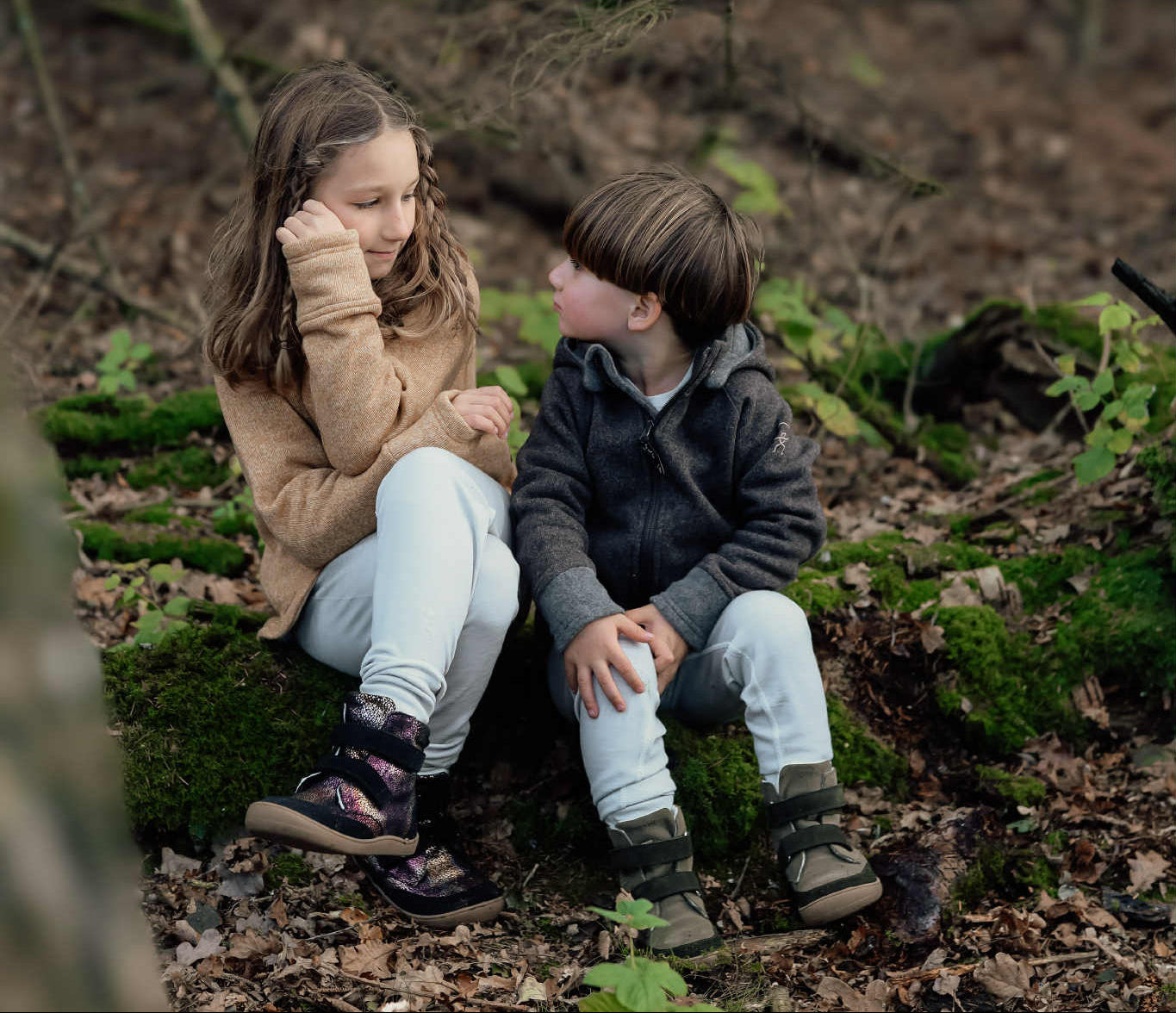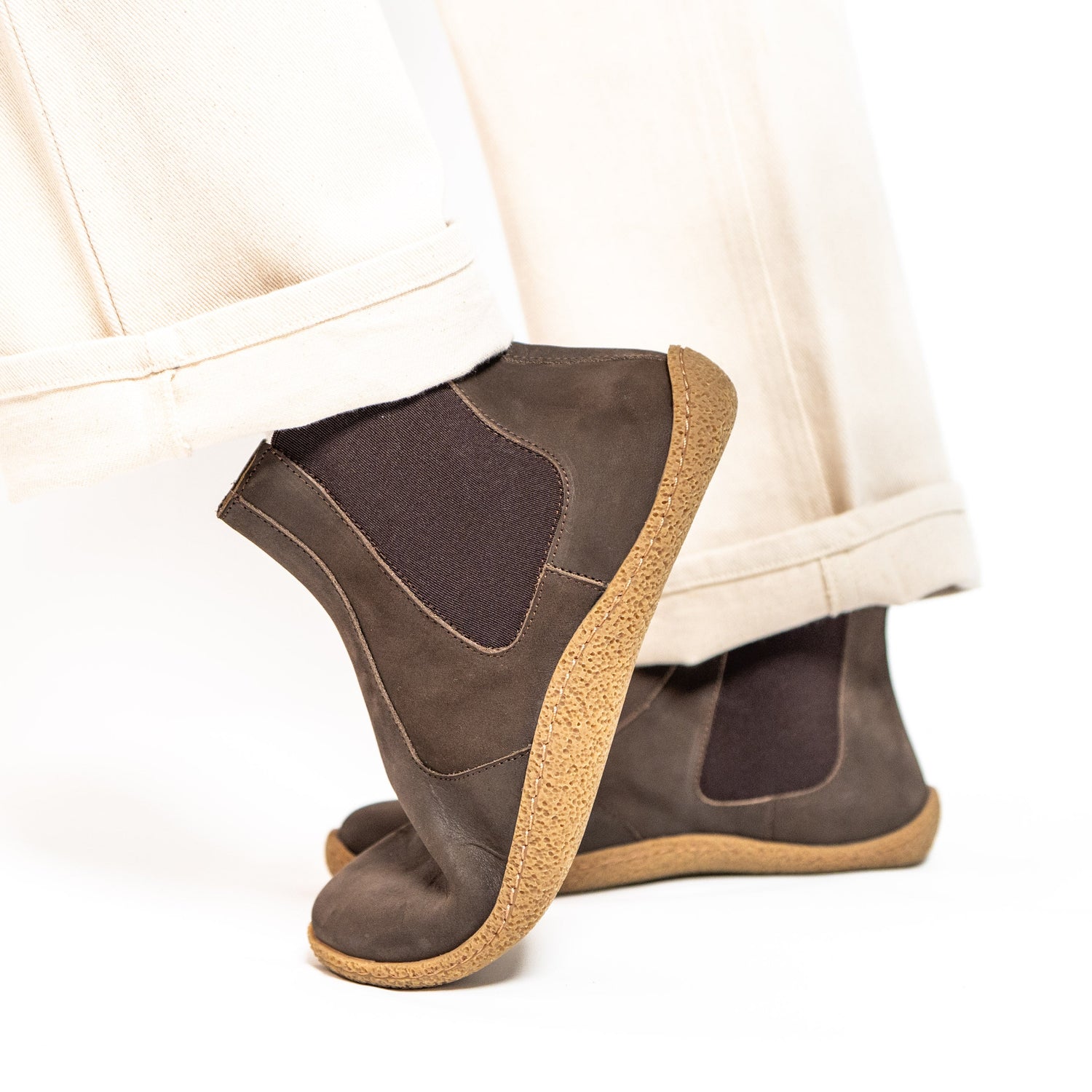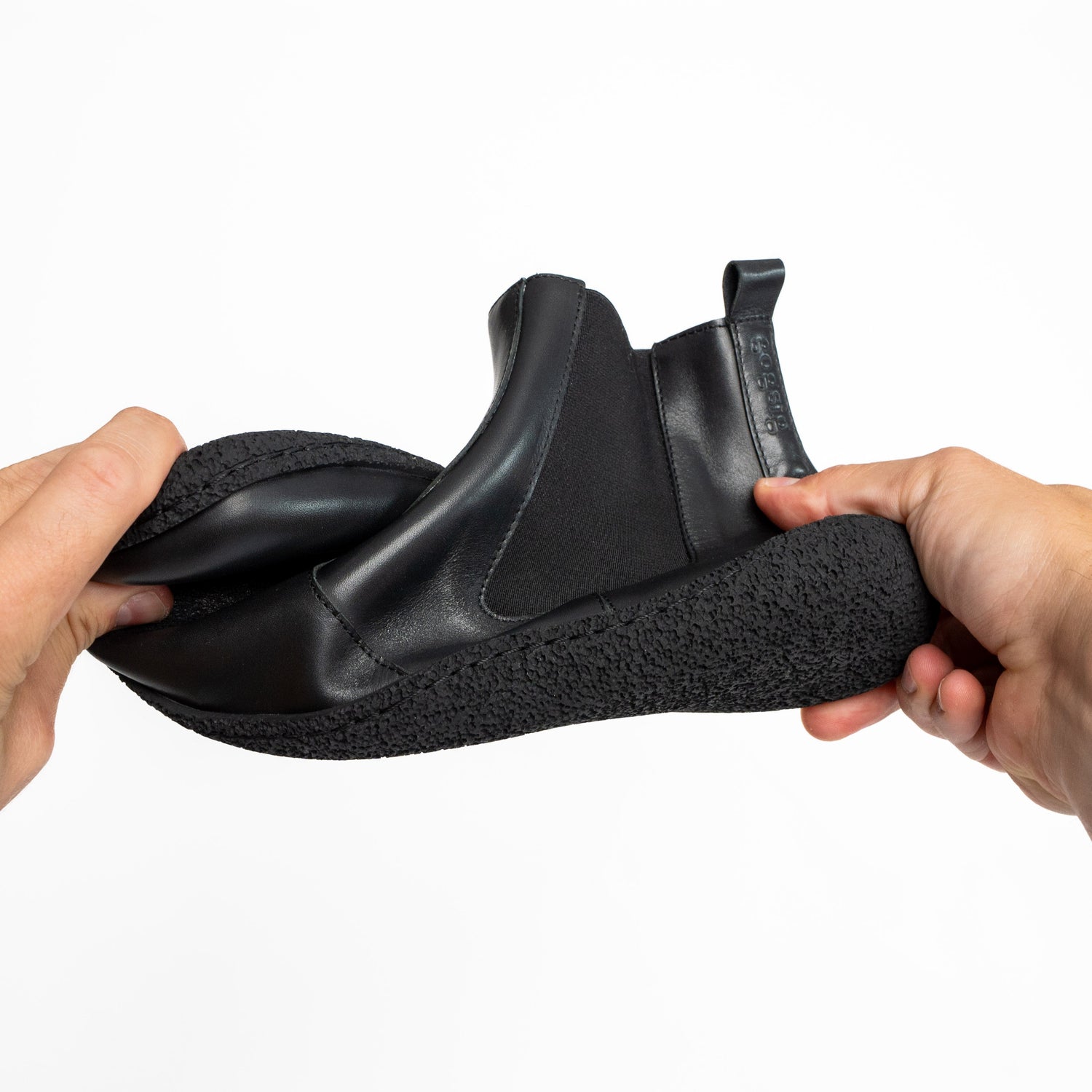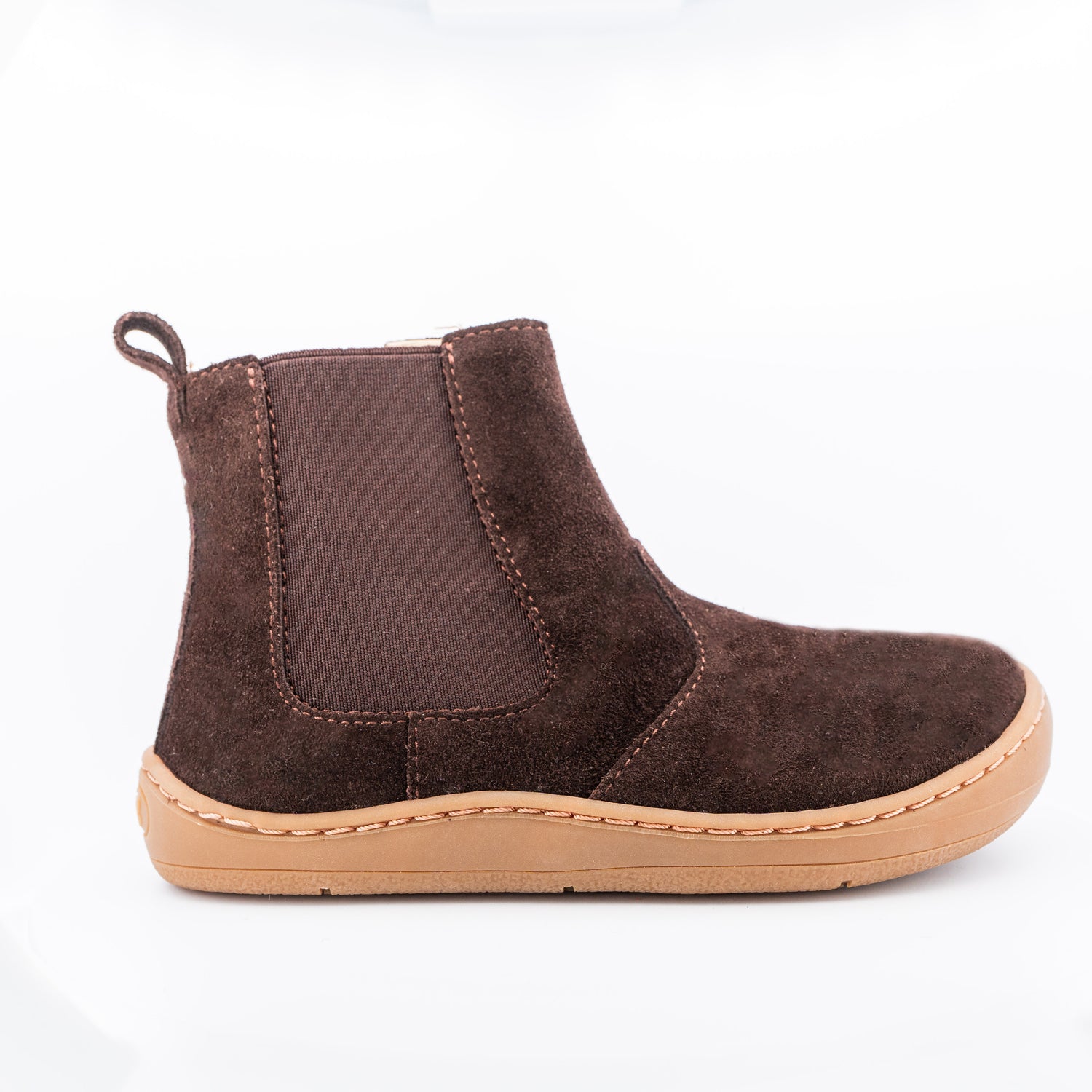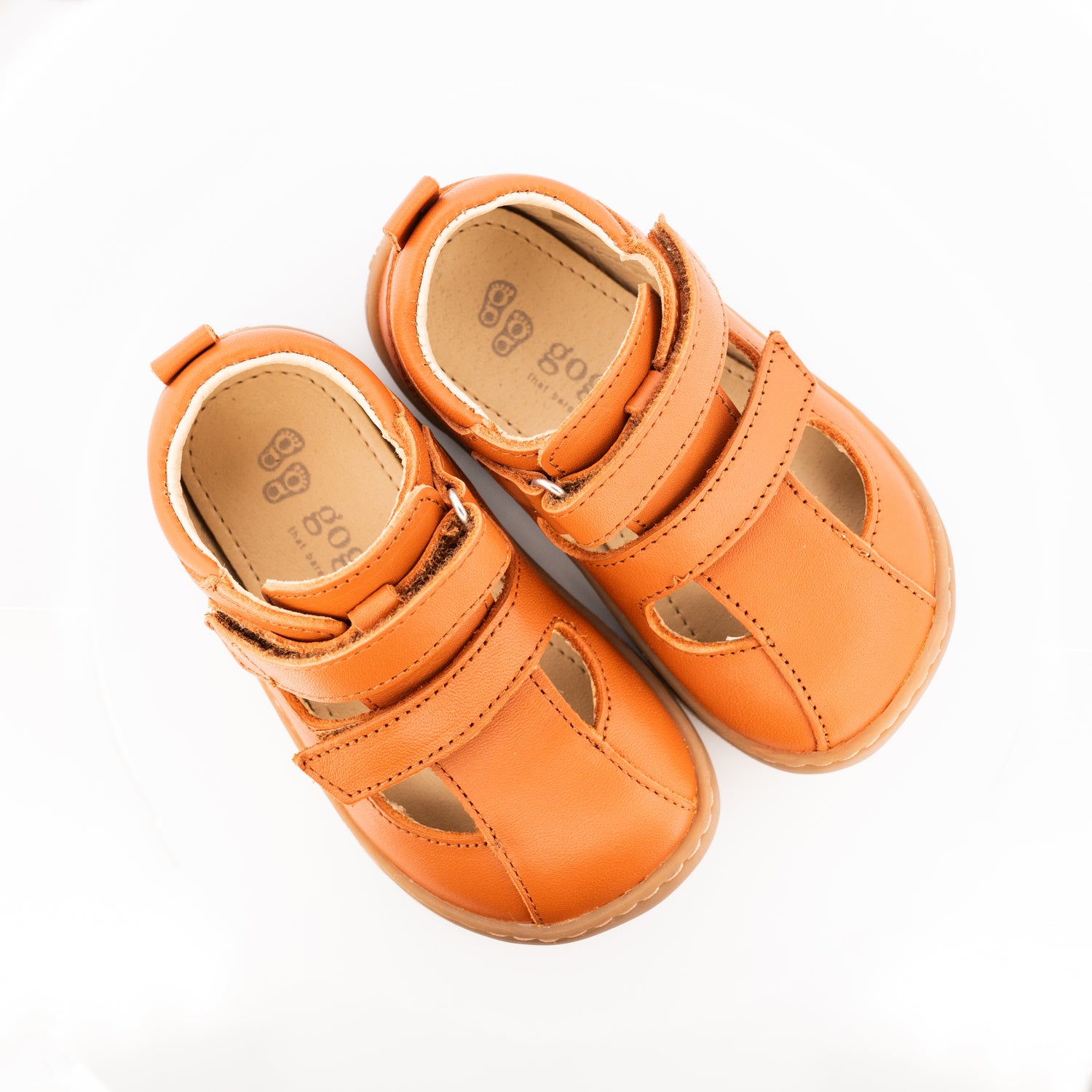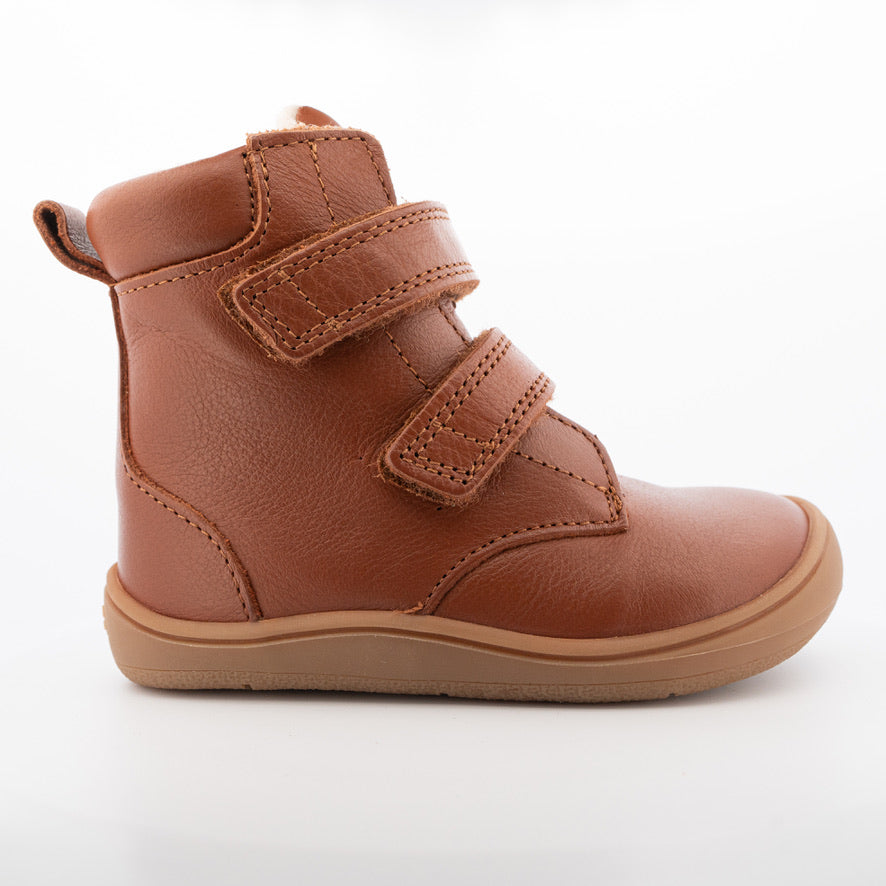One of the most frequently asked questions we get is:
"Do you have a fixed heel cap in your shoes?" - "I need a fixed heel cap because my child walks a little inward, so I think he needs support."
This is a natural concern because we have been told over the years that toddlers need support in their shoes to walk properly. But what does the research and experience of children walking barefoot say?
We have spoken to our physiotherapist Thomas Pretsch, who will try to explain a little about the meaning!
What is a firm heel cap and why is it often recommended?
A firm heel counter is the rigid part of a shoe that sits around the heel and is designed to hold the foot in place. Traditionally, it is often recommended because it is believed to:
✔️ Provide support to the ankle joint
✔️ Stabilize the foot and prevent crooked gait
✔️ Help children maintain balance
But does that mean that a firm heel cap is necessary or the best choice? "Not necessarily," says Thomas.
Natural foot development – without support
Thomas explains - "Children's feet are naturally designed to support the body without the need for external support. When we look at societies where children grow up barefoot, we find a common denominator: Stronger feet, better balance and a natural gait."
When a child wears shoes with a fixed heel counter or rigid support, the natural movement of the foot is restricted. This means that the muscles in the feet and ankles are not allowed to work as much as they should. Over time, this can actually lead to weaker foot muscles and a less flexible gait.
What if my child walks inward (pronates)?
A question we often get from Thomas is about pronation, what significance it has in relation to support in the shoe - "It is completely normal for small children to initially walk a little inward (so-called pronation). They are still developing their muscles and balance, and this often corrects itself naturally over time when they are allowed to use their feet freely".
A fixed heel counter can in some cases keep the foot "in place", but it does not solve the reason why the child walks inward - rather it prevents the feet from working harder. Instead of correcting the natural development of the foot, it may be advantageous to choose shoes that:
✔️ Provides full freedom of movement for the ankle
✔️ Has a flexible heel cap that doesn't lock the foot in place
✔️ Allows muscles to strengthen naturally through movement
Why are wide toe box and zero drop also important?
To give your child the best conditions for healthy feet, it is not only important to avoid a tight heel cap - the shape and construction of the shoe itself also plays a big role.
Wide toe box – more room for your toes
👣 What is a wide toe box?
A wide toe box means that the shoe has plenty of space in the forefoot, allowing the child's toes to spread naturally when walking and standing.
🦶 Why is it important?
- Toes have room to move and develop naturally
- Prevents toes from being pinched together, which can lead to misalignments such as bunions
- Provides better balance as the toes can be actively used to grip the surface
Many traditional shoes are narrow in the forefoot, forcing the toes together and limiting their natural function. A wide toe box ensures that your child's feet remain healthy and strong.
Zero drop – natural stance from the feet up
⚖️ What is zero drop?
Zero drop means that the shoe has the same height from heel to toe – meaning no elevation in the heel, as is often seen in traditional shoes.
🚶♂️ Why is it important?
- Maintains the child's natural posture and body position
- Distributes weight evenly across the entire foot, allowing muscles and joints to work naturally
- Promotes a natural gait without forcing the body into an unnatural angle
Even a small heel on a child's shoe can change the way a child moves, creating unnecessary strain on joints and muscles. A shoe with zero drop allows the body to move as it was designed to.
The advantages of a shoe without a fixed heel cap, with a wide toe box and zero drop
By choosing a barefoot shoe with these features, you give your child the opportunity to:
👣 Develop a stronger foot – Natural movement strengthens the muscles, so the foot becomes stable without the need for support.
⚖️ Improve balance – Sensory input from the surface helps the child refine their body control.
🚀 Learn to adjust your gait naturally – Without a fixed heel cap and with room for your toes, the foot becomes better able to adapt to the surface and stabilize itself.
🌱 Move as nature intended – Zero drop ensures that the child's body is not forced into an unnatural position.
So what should you choose?
So Thomas, having said all this, what should you choose as parents?
"Instead of thinking 'my child needs support', it might be worth turning the question to: 'How can my child's feet develop optimally, how did I teach my child to walk?'"
"If your child is experiencing pain or has a gait that concerns you, it is always a good idea to consult a professional. In some cases, shoe support may be necessary."
Children are made for movement , and the more freedom we give their feet, the stronger they become. Barefoot shoes without a fixed heel cap, with a wide toe box and zero drop, allow for just this development – without inhibiting the foot's natural function.
So the next time you consider a shoe for your child, think about what benefits their feet in the long term. Is it support – or freedom to move naturally?💡👣
We hope this answers some of your questions, and if you have any concerns or more questions, write in our chat, or stop by Thomas's and have a chat with him! - BetterMove – Human Movement by Thomas Pretsch – Physiotherapy – Training



